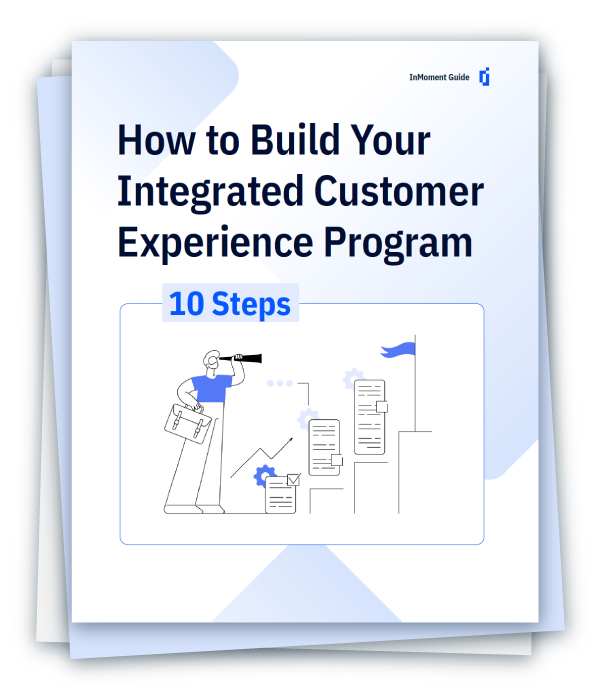
You’ve heard it time and time again: employees are your greatest asset for business success.
We all know it’s true, but only a few experts can articulate (and prove) how the employee experience directly impacts the bottom line. And perhaps that’s why so many brands stick to the customer experience and fail to include employees in their efforts. The thing is, however, that the customer experience and the employee experience overlap in so many ways.
In the first episode InMoment’s “XI Expert Take” video series, VP of Global Employee Experience Stacy Bolger dives into that overlap and explains how businesses can leverage their employee experience for organization-wide success. Here are a couple of takeaways we want to highlight for you:
Lack of EX Investment Equals Significant Revenue Drainage
As a part of her role at InMoment, Stacy Bolger often visits brands to brainstorm solutions to their greatest EX challenges. Despite the fact that these brands span across industries and the globe, Bolger has found that she often sees the same phenomenon unfold: brands that don’t have a strategy in place to survey their employees lose money.
In her “XI Expert Take” episode, she uses the example of a call center to bring this point to life. In her story, call center agents regularly take the same call about a process inefficiency that causes customers frustration.
“Let’s say that [in that call center] 150 representatives take a call [for the same issue] twenty times per week. That comes out to three thousand times per week. At eight dollars per call, that now has translated to $24,000 a week on the same call. And when we annualize it? That comes to $1.2 million a year that we are spending on a single call type and a process that a frontline employee has the insight to fix, knows the solution to, and yet that brand simply does not have the process with which to gather that feedback.”
That’s right. If the brand in Stacy’s example simply surveyed its employees asking for insights about the customer experience, it could save over a million dollars! And though this situation is hypothetical, the same kind of revenue drain is all too real for brands that fail to invest in the employee experience and examine the voice of employee (VoE).
Failure to Listen to Employees Leads to Lower Engagement
Voice of employee initiatives definitely excel at removing customer-unfriendly processes, but they also are absolutely vital to keeping employee morale up and churn down. Why? Because employees who feel listened to feel valued, are more engaged, and are likely to stick around a lot longer.
Put yourself in your employees’ shoes. If you kept bringing up a recurring process or operations issue to your manager, but nothing was being done to fix that issue on a large scale, how would you feel? You’d feel small, you’d feel ignored, and you’d feel as if all the work you put in day after day amounts to nothing in the eyes of your employer. If you felt that way, would you stick around?
It’s safe to say that no one would enjoy that situation. And when unsatisfied employees leave, your organization loses tenured, passionate employees and a significant amount of money. In fact, turnover can cost a company about 33% of
an employee’s annual salary. How? Because when an employee leaves, the business has to take on multiple costs, including the cost to recruit and the cost to train!
Putting a voice of employee program into place prevents this drainage. It creates a strategy with which brands can survey their employees about the customer experience. And when you combine strategic listening with advanced analytics that unearth trends in that data, you can alert the right teams within the company to take action and make change.
When the employee sees a process they’ve flagged as an issue transformed into something more customer friendly, they feel like an imperative part of the organization (which, in truth, they are).
Tying Business Value Back to Employee Initiatives
In the rest of her episode, Stacy highlights other areas where employee initiatives excel, does some quick math to quantify the results, and tells you the steps you should take to get the ball rolling.
But don’t take our word for it. You can watch the full twenty minute session for free here!













